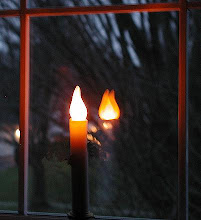Victor
Entertainment Weekly:
The Returned
Posted August 19 2015 — 6:54 PM EDT
http://www.ew.com/article/2015/08/19/the-returned-les-revenants-french-season-2
The Returned — or Les Revenants, as its known in its homeland — first premiered back in 2012 on France’s Canal+ and went on to air on the Sundance Channel in 2013 before taking a years-long hiatus. But now The Returned is making, a, well, return: The eerie drama’s set to debut its second season this fall, the show tweeted (along with a link to a quick, mysterious teaser) Wednesday.
The Returned follows a group of people who were once declared dead but have since reappeared back on earth as living, breathing humans. The show is based on a 2004 French film titled They Came Back (or, again, Les Revenants in French), and has itself been the inspiration for other media: A&E adapted the show for American audiences in 2015, but it was canceled after one season...
It was on last night. I recorded it and watched it today while the sun is up.
If you have not seen it, just watch the opening five minutes and let the credits roll by and listen to the music... because you really need to have seen the first season.
In the new series, the action takes place six months after the first series story ended. That was 3 years ago real time. Adele is dark and morose, Lena and Camille are more beautiful, Victor is growing up, M. Seguret has a six month (or three year) beard...
The French Army has moved in, and I sense that my enchantment is also aging. I do not think I will have the innocent amazement I had for the first season. The story now seems to be flowing into accepted paths; maybe not; it is early yet.
Nevertheless, the series started with resurrection: there was a display of mounted butterflies in an entomologist's glass cabinet mounted on a wall in a well-worn corner of a comfortable dwelling; it had obviously been there for a while.
Suddenly, the center butterfly begins to twitch, then move its wings;
then, crash!, the plate of glass shatters, the pin which cruelly mounted it is thrown aside, and the butterfly breaks forth into the air!
This was new.
The power of rebirth was not concentrated, but was broadcast and covered a large area. Not only mankind, but the animals, the insects, and the flora must have been involved! If the writer/director Fabrice Gobert had time, he would have had shots of dead fossil trees re-invigorated... maybe the drowned bells of the carillon of the old church submerged in the lake created by the new dam would have swung in watery chorus...!?
So I naturally thought of the gospel of Matthew 27: 51-54
51 At that moment the curtain of the temple was torn in two from top to bottom. The earth shook, the rocks split 52 and the tombs broke open. The bodies of many holy people who had died were raised to life. 53 They came out of the tombs after Jesus’ resurrection and[a] went into the holy city and appeared to many people.NIV
It was as if raising up from the dead were due to a power spread widely in place and time.
However, this is a stumbling block to the literal and rational dogmatists.
The Cripplegate:
Matthew 27:51-54 – Understanding a Difficult Text
by Lyndon Unger September 18, 2015
http://thecripplegate.com/matthew-2751-54-understanding-a-difficult-text/
If you loosely follow evangelical apologetics circles like I do, you’ve possibly run across the name Mike Licona. A few years ago he was involved in a kerfuffle when he questioned the historicity of Matthew 27:51-54 in his book The Resurrection of Jesus: A New Historiographical Approach. He commented on “that strange little text in Matthew 27:52-53, where upon Jesus’ death the dead saints are raised and walk into the city of Jerusalem” (548) and wrote:That's a tough call.
“it seems to me that an understanding of the language in Matthew 27:52-53 as ‘special effects’ with eschatological Jewish texts and thought in mind is most plausible. There is further support for this interpretation. If the tombs opened and the saints being raised upon Jesus’ death was not strange enough, Matthew adds that they did not come out of their tombs until after Jesus’ resurrection. What were they doing between Friday afternoon and early Sunday morning? Were they standing in the now open doorways of their tombs and waiting?” (552)
Licona closed of his discussion of Matthew 27:51-54 writing, “It seems best to regard this difficult text in Matthew as a poetic device added to communicate that the Son of God had died and that impending judgment awaited Israel” (553). How did that idea fare for him?
Not so well.
Upon being challenged on his view of inerrancy by none other than Stormin’ Norman Geisler: he has a whole section on his website dedicated to Licona, including support from Ergun Caner and Al Mohler. Licona responded with his own letter including a list of scholars who didn’t think he was challenging inerrancy, and the battle raged on as my disinterest grew exponentially. After the dust settled, Licona lost his job with the Southern Baptist North American Mission Board and resigned from Southern Evangelical Seminary, but quickly was hired by Houston Baptist University. I’m glad that he’s still working and contributing too. Mike Licona isn’t some sort of heretic (that I know of). He’s a rather capable apologist with a flaw common to most apologists; he has precious little training in the proper interpretation of the Scripture...
...I’d like to take a stab at addressing the same conundrum without resorting to such inventive explanations, not because I’ve got anything against Licona but because I love tackling difficult texts...
[...]
Then, in 27:52-53 there’s an indication of the meaning of the death of Christ. This is seen in the physical resurrection of many “saints who had fallen asleep.” Now many tombs were split open (possibly the rocks which were split were tomb-sealing stones), but only the “saints who had fallen asleep” were raised, emerging from their tombs after Christ rose from his.
This was the passage on which Licona got hung up. He seemed to think that those raised saints were raised when the tombs were split and “sat around” all weekend, waiting for Christ to be raised. I’d argue that such an idea is forcing the text. The tombs were split at the same time as the veil, but the saints came forth after Christ. There’s no reason to think that the saints were resurrected at the time of the splitting. It’s far more likely that the saints were resurrected at the time of Christ’s resurrection, emerging a short time after he did.
The root word used for the "raising" of Jesus is the same word as is used for the holy people. The NIV version captures that in that it says - in the Passive voice - that the holy people who had died "were raised". Then the NIV immediately muddies matters by using "resurrection" to describe the same process applied to Jesus: in both cases, it was a "raising" back into life.
The NIV also inserts a period where there is none.
The Greek version says that the earth shook and the rocks split and the tombs were broke open AND the bodies of many holy people were raised to life. There is no hiatus, implied or otherwise, between these events. These events happened 1,2, 3, and 4, at least according to Matthew.
There is a hiatus between these events and Jesus resurrection and the peoples' coming out of their tombs, the hiatus being the three day lapse.
It is as if a number of these people have a story that any "real" raising of the dead must not precede that of Jesus. This neglects the Lazarus case.
It is as if these people have so much invested in a given rational belief system about the Holy - something they know little about and usually never experienced - they cannot deal with a simple description right in front of them.
There are no hard to understand parables here.
There is a sequence of events.
Why do these rational dogmatists seek to establish the limits of God?
Why does the act of the Holy, the raising of the dead have to emulate the snapping of the fingers of a stage magician? Why cannot resurrection spread throughout time and space?
The Holy cannot be limited in time, space, nor your in your dogmatic statements.
I rather understand that the holy force of rebirth spread back and forth in time: at least as far back as Lazarus and forward to infinity; rebirth spread throughout the universe. Taxes may be certain, but Death has Quantum probability: it is not necessary and final.
God is a living event, not an object of their scrutiny and science, nor some well-defined divine species to be pinned to a board amid the other specimens of their Credo!
--
(among other things, the holy people raised up seem to have been recognized - in some sense - by the city's inhabitants. There are a number of ways of approaching that phenomenon.)




















No comments:
Post a Comment